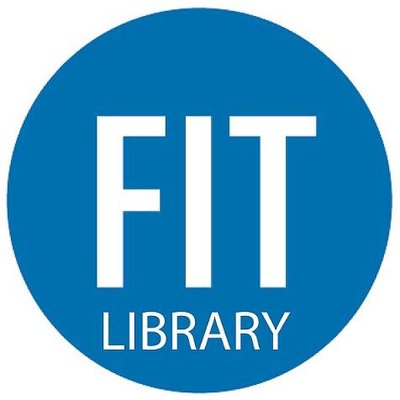Occurrence of Clinical Options of Undifferentiated Connective Tissue Dysplasia in Uzbek Population
DOI:
https://doi.org/10.61841/010my362Keywords:
undifferentiated connective tissue dysplasia, clinical options, external and internal hair dryers, HLA systemAbstract
Object: To study the occurrence of clinical variants of undifferentiated connective tissue dysplasia (NDST) in the Uzbek population.
Methods: 105 individuals were examined, including 49 (46.4%) males and 56 (53.6%) females aged 15 to 28 (20.13 ± 0.66) years with signs of NDCT.
Findings: The incidence of NDCT in women is within 40%, in males 66.0%. An analysis of the distribution of NDST by place of residence showed a slight predominance of city residents (60 patients lived in the city, 45 in the countryside); an increase in the frequency of HLA gene class II was observed: HLA DRB1 *, DQA1 * 04: 01, and DQB1 * 04: 01/2. The incidence of clinical options is joint hypermobility (100%), changes in the shape of the spine (44%), chest (43.8%), skin extensibility of varying severity (38.8%), small developmental anomalies (21.1%), and flat feet (20.4%). The frequency of combinations of external hair dryers: a combination of 6 revealedat 5 (4,5%), 5-th at 11 (10%), 4-th at 21 (20%), 3-rd at 26 (24,3%), 2-nd at 31 (30,6%) examined
Conclusions: Thus, the early detection of signs of NDCT in young people among the Uzbek population will optimize early diagnosis and predict the outcome of the disease.
Downloads
References
1. Belyaev O. V., Vishnevskaya O. I. Syndrome of systemic dysplasia of connective tissue in children with bronchopulmonary pathology // Vestnik RSMU. - 2015. - 3 (42) - P.121.
2. Bugaeva I.V., Vasilieva O.V. Connective tissue dysplasia is an urgent problem of modern medicine (literature review) ultrasound perinatal diagnostics.-2012.-№27 28.-p. 266-281
3. Bugaeva I.V., Vasilieva O.V. Connective tissue dysplasia is an urgent problem of modern medicine (literature review) ultrasound perinatal diagnostics.-2012.-№27 28.-p. 266-281.
4. Vereshchagin G.N. Systemic dysplasia of the connective tissue. Clinical syndromes, diagnosis, treatment approaches: a manual for doctors. Novosibirsk: Novosibirsk State Medical University, 2018.-37. (p23-31).
5. Gnusaev S.F. Syndrome of connective tissue dysplasia of the heart in children // Attending physician.- 2010.-No. 8.-P.40-44.
6. Dedova V.O., Dotsenko N.Ya., Boev S.S. et al. The prevalence of connective tissue dysplasia (literature review)// Medicine and Education in Siberia. 2011. No. 2. P. 123-129.
7. Domnitskaya T. M. Abnormally located chords. M .: Medical practice. 2017. 95 p.
8. Zemtsovsky E.V., Undifferentiated connective tissue dysplasia. State and prospects of development of ideas about hereditary disorders of connective tissue // Dysplasia of connective tissue. - 2016. - No. 1. - S. 5–9.
9. Kadurina T.I., Gorbunova V.N. Connective tissue dysplasia. St. Petersburg: ELBI, 2013. 714 p.
10. Komissarova L.M., Karachaev AN., Kesova M.I. The course of pregnancy and childbirth with connective tissue dysplasia // Obstetrics and gynecology.- 2012.- No. 3.- P.4-8.
11. Moses V.G., Ushakova G.A. Systemic manifestations of connective tissue dysplasia in women with varicose veins of the pelvis // Obstetrics and Gynecology. 2016. No. 2. P. 42-44.
12. Nechaeva G.I., Viktorova I.A. Connective tissue dysplasia: terminology, diagnosis, and management tactics. Omsk, 2015. 188s.
13. Nesterenko Z. V. Classification concepts of connective tissue dysplasia // Health of a child. 2015. No. 5 (26). - P.131-135
14. Nechaeva G.M., Yakovlev V.M., Konev V.P., and other connective tissue dysplasia: the main clinical syndromes, the diagnosis, and treatment // The Attending Physician. 2018. No. 2. P. 22–28.
15. Nechaeva G.I. et al. To the problem of connective tissue dysplasia in the pathology of the cardiovascular system in children. Journal “Child Health” 4 (7) 2015.- p. 20-24
16. Nikolaev K.Yu., Oteva E.A., Nikolaeva A.A., and other connective tissue dysplasia and multiple organ pathology in schoolchildren // Pediatrics. 2016. No. 2. P.89-92.
17. Ostropolets S.S. To the problem of connective tissue dysplasia in the pathology of the cardiovascular system in children // Children's Health.- 2017.- No. 4 (7).- P.15-20.
18. Ponomarenko Yu.V. Hypermobility of joints in the syndrome of undifferentiated connective tissue dysplasia //
Kazan Medical Journal.- 2017.- T.88, No. 5. (adj.) .- P.15-17.
19. Perekalskaya M.A., Makarova L.I., Vereshchagina G.N. Neuroendocrine dysfunction in women with systemic
dysplasia of the connective tissue // Clinical Medicine.– 2012.– T.80, No. 4.– P.48–51
20. Smolnova T.Yu., Buyanova S.N., Savelyev S.V., Petrova V.D. Connective tissue dysplasia as one of the
possible causes of urinary incontinence in women with genital prolapse // Urology. - 2014. - No. 2. - P.25 - 30.
21. Spivak E.M. Joint hypermobility syndrome in children and adolescents: Monograph.- Yaroslavl, 2013.- 128с
22. Tyabut T.D., Karatysh O.M. Undifferentiated connective tissue dysplasia // Modern rheumatology.- 2014.- No.
2.- P.19-23.
23. Filipenko P.S., Malookaya Yu.S. The role of connective tissue dysplasia in the formation of mitral valve
prolapse // Klin.meditsina.- 2012.- T.84 (12) .- P.13–19.
24. Tsukanov Yu.T., Tsukanov A.Yu. Varicose veins of the lower extremities as a result of connective tissue
dysplasia // Angiology and Vascular Surgery. - 2014. - T. 10, No. 2. - S. 84 - 89.
25. Shilyaev R.R., Shalnova S.N. Connective tissue dysplasia and its connection with the pathology of internal
organs in children and adults // Vopr. modern pediatrics. - 2013. - No. 5 (2). - S. 61–67.
26. Shodikulova G.Z. Markers of endothelial function and antioxidant system in assessing undifferentiated
dysplasia of connective tissue in patients with congenital mitral valve pololapse // Postgraduate Doctor. - 2012.
- T. 54. - No. 5.1. - S. 217-223.
27. Shodikulova G.Z., Tashkenbaeva E. N. The state of endothelial function and the protective effect of magnesium
ions (Mg 2) in patients with undifferentiated dysplasia of the connective tissue with congenital mitral valve
prolapse // News of problems of biology and medicine. - 2012. - T. 2. - No. 2.Arroyo-Avila M., Vila L.M.
Cardiac tamponade in a patient with mixed con-nective tissue disease // J. Clin. Rheuma-tol. 2015. Vol. 21, №
1. Р. 42-45.
28. Babamuradova Z. B., Shodikulova G. Z., Mirzaev O. V. Treatment of patients with undifferentiated connective tissue dysplasia in mitral valve prolapse with varying degrees of mitral regurgitation //European European Science Review. (2018). №. 3-4. C.140-143
29. Bennett R. Overlap syndromes. In: Firestein G, Budd RC, Gabriel SE, McInnes IB, O’Dell JR, editors. Kelley’s Textbook of Rheumatology. 9th ed. Philadelphia, PA: Elsevier Inc; 2013. pp. 1431–1451
30. Castori M., Morlino S., Ghibellini G., Celletti C., Camerota F., Grammatico P. Connective tissue, Ehlers-Danlos syn-drome(s), and head and cervical pain // Am. J. Med. Genet. C. Semin. Med. Ge-net. 2015. Vol. 169, № 1. Р. 84-96.
31. Conti V, Esposito A, Cagliuso, et al. Undifferentiated connective tissue disease—An unsolved problem: revision of literature and case studies. International Journal of Immunopathology and Pharmacology. 2010;23(1):271-278.
32. Deng Y., Wei S., Hu S., Chen J., Tan Z., Yang Y. Ehlers-Danlos syndrome type IV is associated with a novel G984R COL3A1 mutation // Mol. Med. Rep. 2015. Vol. 12, №1. Р. 1119-1124.
33. Guerrero LF1, Rueda JC, Arciniegas R, Rueda JM. Undifferentiated connective tissue disease in a rheumatology center in Cali, Colombia: clinical features of 94 patients followed for a year. Rheumatol Int. 2013 Apr;33(4):1085-8.
34. Hajas A, Szodoray P, Nakken B, Gaal J, et al. Clinical course, prognosis, and causes of death in mixed connective tissue disease. J Rheumatol. 2013;40(7):1134–1142.
35. Jensen S.A., Aspinall G., Handford P.A. C-terminal propeptide is required for fi-brillin-1 secretion and blocks premature assembly through linkage to domains cbEGF41-43 // Proc. Natl. Acad. Sci USA. 2014. Vol. 111, №28. Р. 10155-10160.
36. Mosca M., Tani C., Vagnani S., Bom-Bardieri S. The diagnosis and classification of undifferentiated connective tissue diseases // J. Autoimmun. 2014. Vol. 48-49, Р. 50-52.
37. Shodikulova G. Z. Effect of L-arginine on endothelial dysfunction in patients with congenital mitral valve prolapse //Kazan medical journal. – 2014. – Т. 95. – №. 3. – С. 326-331.
38. Shodikulova G. Z., Toirov E. S., Babamuradova Z. B. Clinical biochemical features in patients with undifferentiated connective tissue dysplasia // European Science Review. 2016. – №. 1. – С. 129-131.
39. Shodikulova G. Z. Special features of clinical and functional disorders in patients with undifferentiated connective tissue dysplasia // European Science Review. 2017. – №. 3-4. – С. 72-74.
40. Shodikulova G. Z. Value of matrix metalloproteinases and their tissue inhibitors in the diagnosis of undifferentiated connective tissue dysplasia // The First European Conference on Biology and Medical Sciences. (2014). С. 111-116.
41. Tani C., Carli L., Vagnani S., Talarico R., Baldini C., Mosca M. et al. The diagnosis and classification of mixed con-nective tissue disease // J. Autoimmun. 2014. Vol. 48-49. Р. 46-49.
42. Sung Y.K., Chung L. Connective tissue disease-associated pulmonary arterial hypertension. Rheum // Dis. Clin. North. Am. 2015. Vol. 41, №2. Р. 295-313.
43. Ueshima K. Magnesium and ischemic heart disease: a review of epidemiological, experimental, and clinical evidence //Magnes Res.-2005.-Vol.18 (4).-P.275–284.
44. Wang X.L., Mahaney M.C., SimA.S., Genetic contribution of the endothelial constitutive nitric oxide synthase gene to plasma nitric oxide levels // Arterioscler. thromb. vasc. biol. – 1997. – Vol. 17. – P. 3147–3153.
45. Yosefy C., Ben Barak A. Floppy mitral valve/mitral valve prolapse and genetics //J. Heart Valve Dis.-2007.-Vol.16(6).-P.590-595.
46. Zacchigna L., Vecchione C., Notte A., Cordenonsi M., et al. Emilin1 links TGF-beta maturation to blood pressure homeostasis //Cell.- 2006.- Vol.124(5).- P.929–942.
Downloads
Published
Issue
Section
License
Copyright (c) 2020 AUTHOR

This work is licensed under a Creative Commons Attribution 4.0 International License.
You are free to:
- Share — copy and redistribute the material in any medium or format for any purpose, even commercially.
- Adapt — remix, transform, and build upon the material for any purpose, even commercially.
- The licensor cannot revoke these freedoms as long as you follow the license terms.
Under the following terms:
- Attribution — You must give appropriate credit , provide a link to the license, and indicate if changes were made . You may do so in any reasonable manner, but not in any way that suggests the licensor endorses you or your use.
- No additional restrictions — You may not apply legal terms or technological measures that legally restrict others from doing anything the license permits.
Notices:
You do not have to comply with the license for elements of the material in the public domain or where your use is permitted by an applicable exception or limitation .
No warranties are given. The license may not give you all of the permissions necessary for your intended use. For example, other rights such as publicity, privacy, or moral rights may limit how you use the material.
















